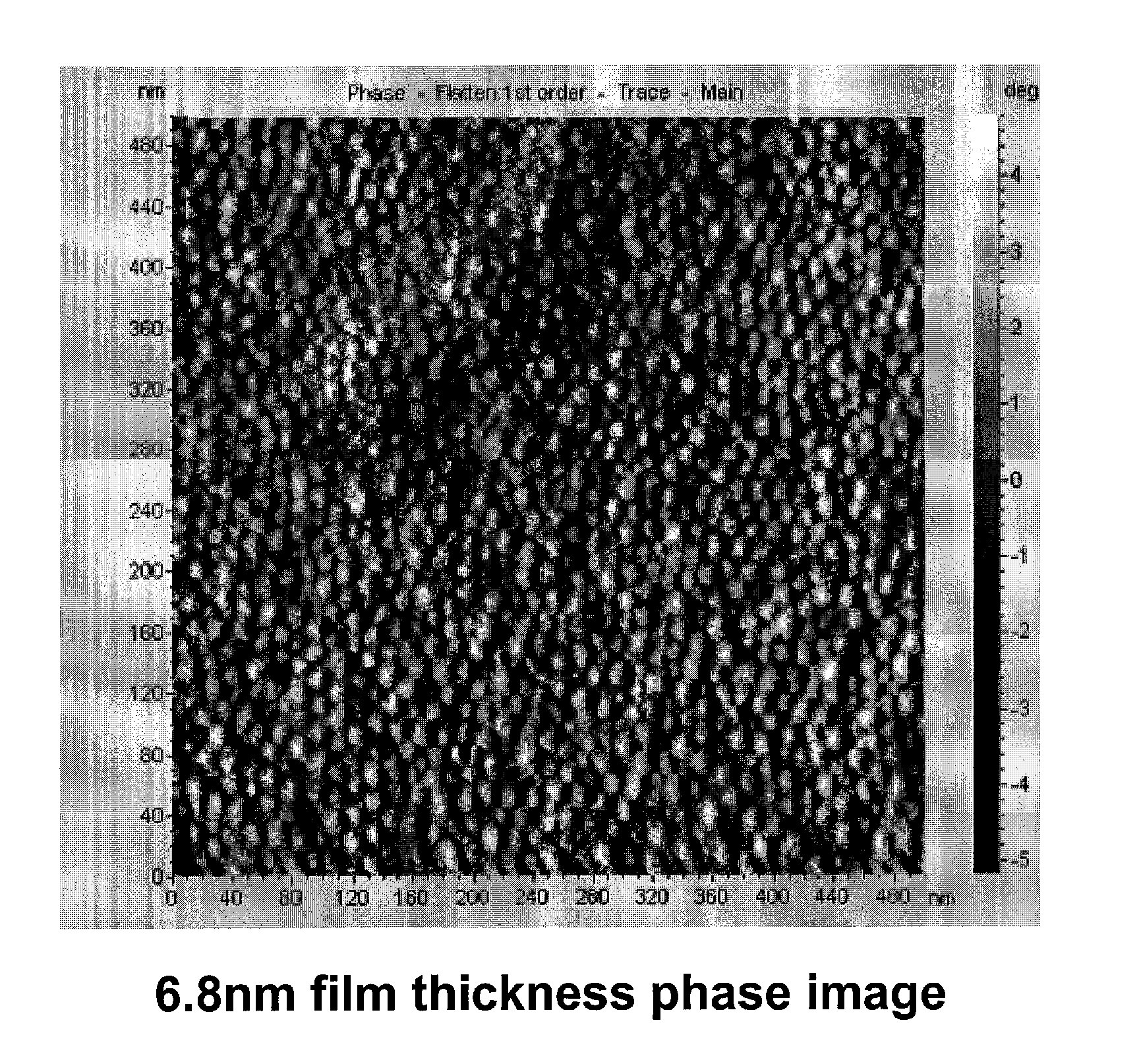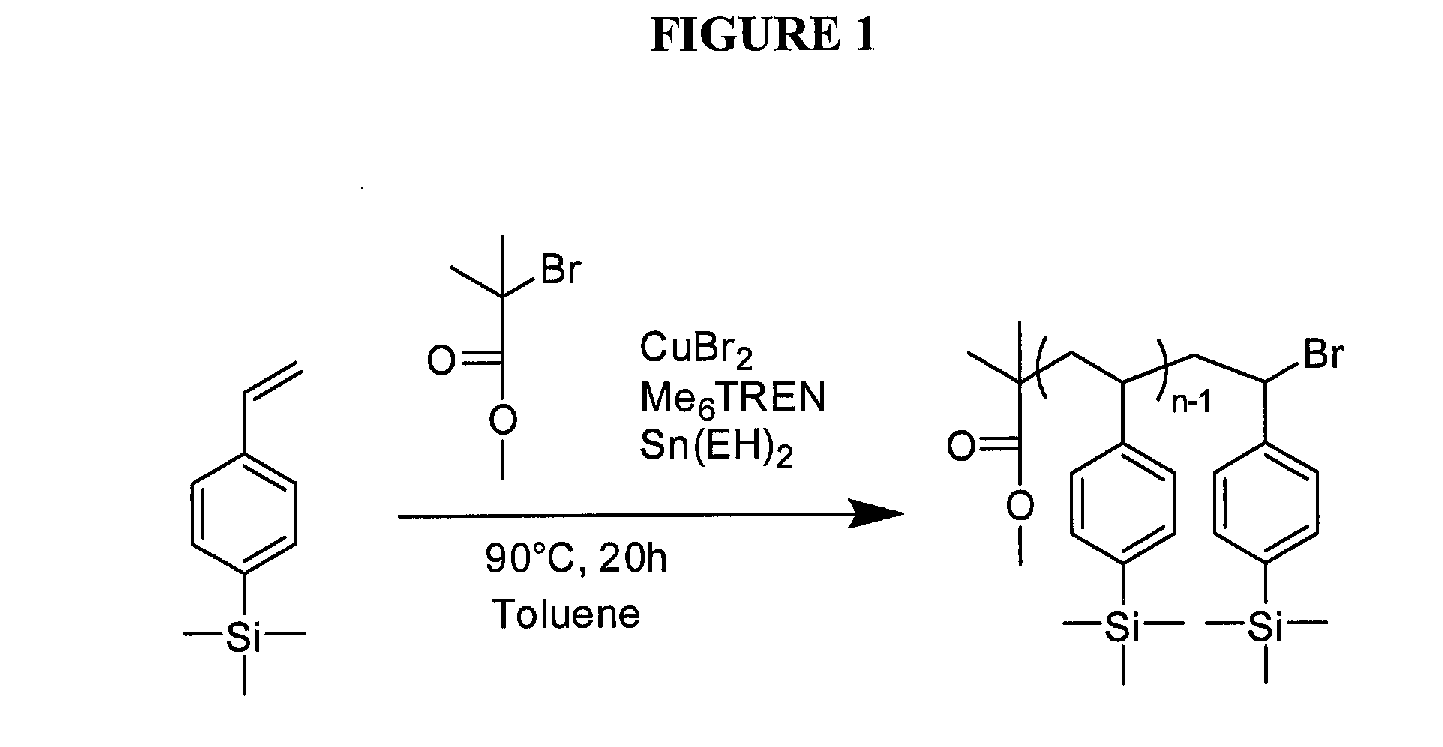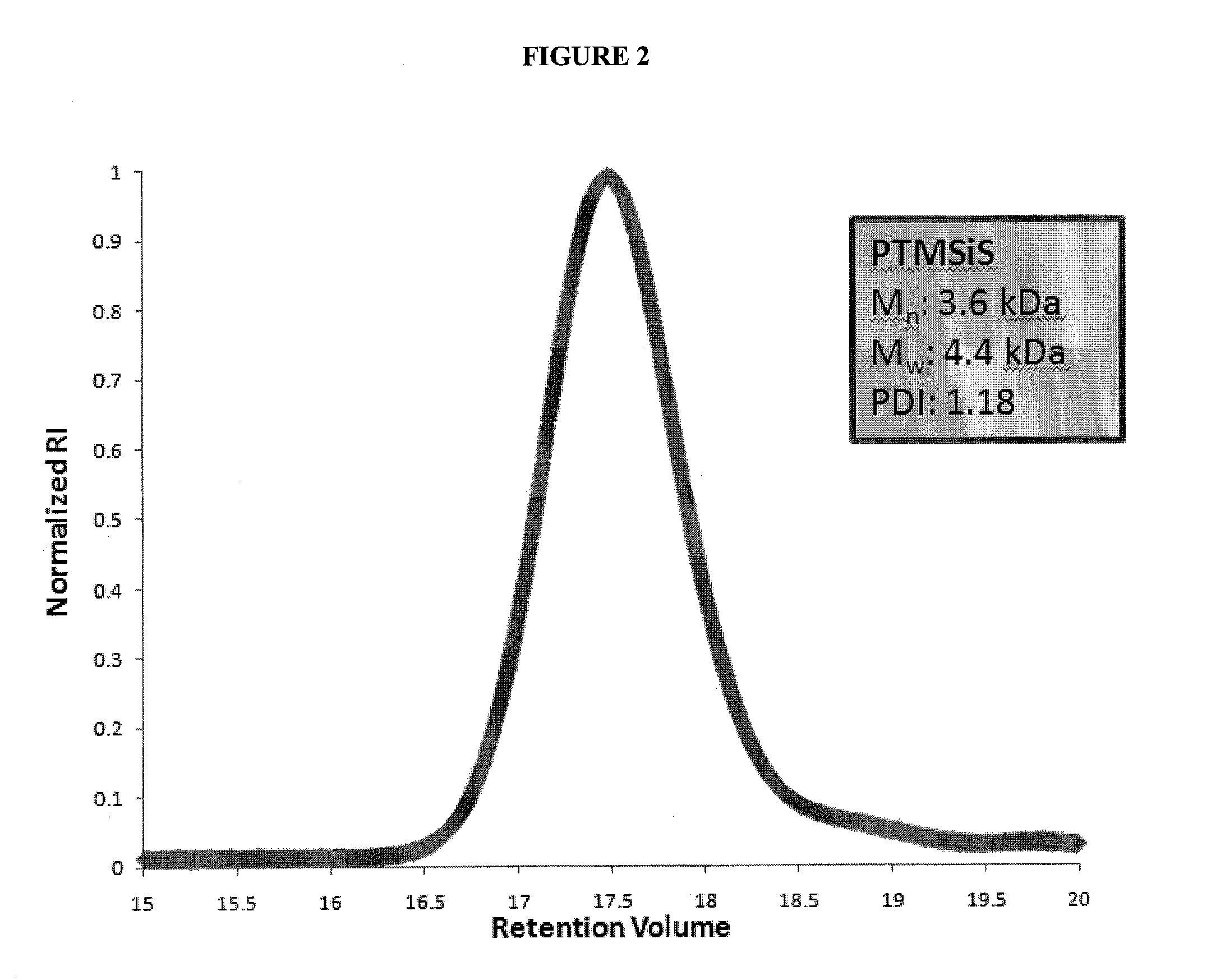Oligosaccharide/silicon-containing block copolymers for lithography applications
- Summary
- Abstract
- Description
- Claims
- Application Information
AI Technical Summary
Benefits of technology
Problems solved by technology
Method used
Image
Examples
example 1
Synthesis of poly(trimethylsilyl styrene) (PTMSiS)
[0083]Trimethylsilyl styrene (TMSiS) was synthesized following a previously reported procedure [11] and was polymerized by Activators Regenerated by Electron Transfer Atom Transfer Radical Polymerization (ARGET ATRP). The general procedure is as follows: TMSiS (23.05 g, 130.7 mmol), ethylbromoisobutyrate (2-(bromomethyl)-2-methylbutanoic acid) (554 mg, 2.8 mmol), copper bromide (6.3 mg, 0.028 mmol), Me6TREN (65 mg, 0.284 mmol), and Toluene (27.5 mL) were added to a round bottom flask. The solution was degassed with argon for 10 min and then tin (II) ethylhexanoate (115 mg, 0.284 mmol) was added via syringe. The solution was submerged in an oil bath at 90° C. and allowed to polymerize for three hours and twenty minutes at which point it reached approximately 40% conversion. The polymer was precipitated in methanol and dried in vacuo. The synthesis scheme for this reaction is summarized in FIG. 1. Molecular weight was analyzed by gel p...
example 2
Synthesis of N-maltoheptaosyl-3-acetamido-1-propyne (propargyl-Mal7)
[0085]A suspension of maltoheptaose (10.0 g, 8.67 mmol) in neat propargylamine (11.9 mL, 174 mmol) was stirred vigorously at room temperature until complete conversion of the starting material (72 h), checked by TLC (eluent: BuOH / EtOH / H2O=1 / 3 / 1). After complete disappearance of the starting material, the reacting mixture was dissolved in methanol (100 mL), and then precipitated in CH2Cl2 (300 mL). The solid was filtrated and washed with a mixture of MeOH and CH2Cl2 (MeOH:CH2Cl2=1:3, v / v, 300 mL). A solution of acetic anhydride in MeOH (acetic anhydride:MeOH=1:20, v / v, 1 L) was added to the solid, and stirred overnight at room temperature. After complete disappearance of the starting material checked by TLC (eluent: CH3CN / H2O=13 / 7), the solvent of the mixture was evaporated, and the traces of acetic anhydride were removed by co-evaporation with a mixture of toluene and methanol (1:1, v / v). The resulting solid was dis...
example 3
Synthesis of N-(XGO)-3-acetamido-1-propyne(propargyl-XGO)
[0087]A suspension of xyloglucooligosaccharide (XGOs: made up of a mixture of hepta-, octa-, and nona-saccharides in the ratio 0.15:0.35:0.50, respectively.) (20 g, 12.1 mmol) in propargylamine (20 mL, 240.3 mmol) and 30 mL of methanol was stirred vigorously at room temperature for 3 days. Upon complete conversion of the starting material, checked by t.l.c., excess propargylamine was removed under reduced pressure, at a temperature below 40° C. and then co-evaporated using a mixture of toluene and methanol (9:1, v / v). The residual yellow solid was dissolved in methanol and then precipitated with dichloromethane. The solid was filtered and washed with a mixture of methanol and dichloromethane (1:4, v / v). The solid was selectively N-acetylated by adding a solution of acetic anhydride in methanol (1:20, v / v). The reaction mixture was stirred for 16 h at room temperature, then the solvent was removed by evaporation, and co-evapora...
PUM
 Login to View More
Login to View More Abstract
Description
Claims
Application Information
 Login to View More
Login to View More - R&D
- Intellectual Property
- Life Sciences
- Materials
- Tech Scout
- Unparalleled Data Quality
- Higher Quality Content
- 60% Fewer Hallucinations
Browse by: Latest US Patents, China's latest patents, Technical Efficacy Thesaurus, Application Domain, Technology Topic, Popular Technical Reports.
© 2025 PatSnap. All rights reserved.Legal|Privacy policy|Modern Slavery Act Transparency Statement|Sitemap|About US| Contact US: help@patsnap.com



